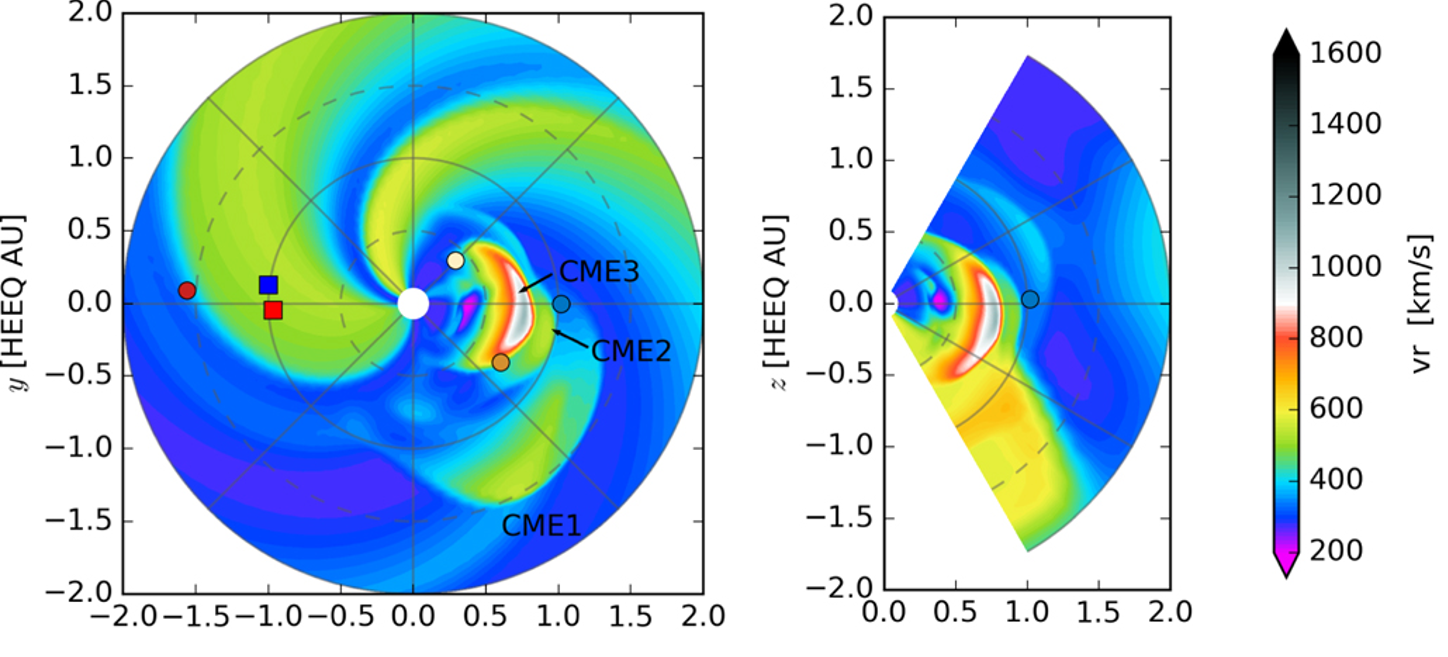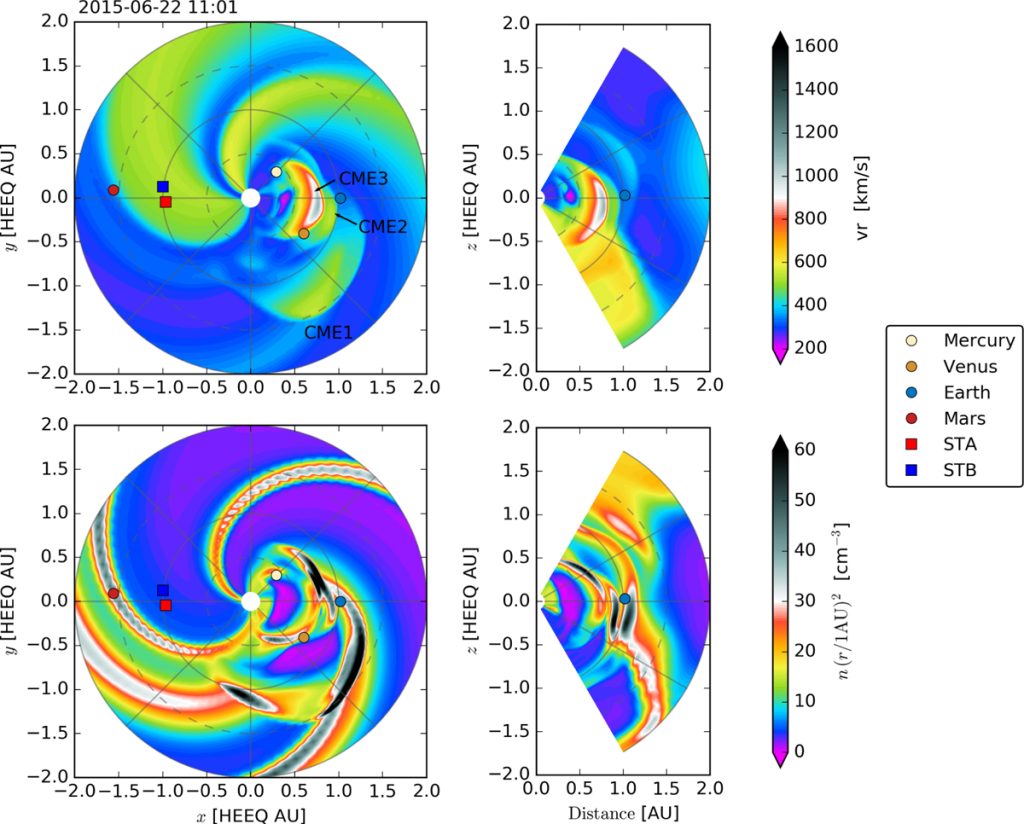
Space Weather Modelling
Written by: Edin Husidic, Lidiya Annie John, Mayank Kumar, Andreas Wagner
While we have a good idea about various space weather phenomena, forecasting them is a different issue and a very hot topic for research. Below challenges and some key current approaches to model space weather are presented.
Challenges in Space Weather Modeling
Despite substantial progress in the field, the accuracy of current space weather forecasting is still partly very modest. If we take, for example, the arrival times of coronal mass ejections (CMEs) at Earth, even the current prediction models have errors in the order of 10 hours.
There are many sources that compromise our forecasting capabilities. One major obstacle is combining the many different scales that need to be resolved from Sun to Earth by the models: In the solar atmosphere, we require a rather fine resolution to model the highly varying magnetic field, density, and temperature, while we may not need such a fine resolution for the entirety of interplanetary space. On the other hand, if we would loosen the resolution in order to speed up the computing, we would lose crucial information about the various processes at Earth and the solar atmosphere and thus would end up with even worse forecasts.
Therefore, instead of having one global model, the current state-of-the-art is chaining together multiple models that only focus on one specific domain. With the combination of different models, we can operate each simulation at the necessary resolution, while minimizing the overall computation time. At this point, it is also worth mentioning that from a physics standpoint, a global simulation would also face the challenge of having one model that can capture both fine-scale problems (kinetic theory) as well as large-scale phenomena (fluid theory) at the same time.
Approaches and Considerations
Various complementary theories have been developed to characterize the heliospheric plasma. When describing the outflows from the Sun, often a fluid description of the plasma is employed. The most widely used version is the so-called magnetohydrodynamic (MHD) approach, suggesting the combination of hydrodynamics and electrodynamics. In this model, the plasma with positive and negative charges is described as a single, conducting fluid (e.g., in the solar corona).
A more complex model is the multi-fluid approach (e.g., in the chromosphere, which is the lower part of solar atmosphere), where different particle species are identified and described as different fluids that interpenetrate each other. Fluid models, although being able to realistically describe the considered phenomena, however, are very computationally expensive and require a correspondingly long computation time.
Since space weather events have to be predicted relatively quickly (typically in less than one day), techniques have been developed that shrink the computation time. In the event that the effects of individual particles have to be taken into account (e.g., when waves interact with particles and accelerate them), a microscopic plasma description is needed, which is achieved by using the kinetic approach based on statistical methods. Fluid and kinetic models do not have to be executed separately but can be combined in a hybrid model.
In general, events that contribute to space weather take place embedded in a large, structured background, which is taken into account differently in different models. One way is to model the large-scale background with a fluid model, which is then used as an input to model transients like CMEs or Solar Energetic Particles (SEPs) on top of it. A simulation result of one of these models, EUHFORIA (EUropean Heliospheric FORecasting Information Asset), is shown below, where the upper panels display the colour-coded velocities and the lower panels the particle densities of the background solar wind the and the CMEs. Another way is to build a self-consistent model, where the background is prescribed (usually in a more simplified way), and which then simulates the transients.

Outlook
Numerical models are great tools for space weather forecasts. But one has to consider different approaches based on the relevant physical ingredients, physical scales, region of focus, available computational resources, necessary computation time, etc. of the problem that has to be addressed. In order to effectively focus on these issues, accurate validation of these models is inevitable. International Space Weather Action Teams (ISWAT) along with Committee on Space Research (COSPAR) validates and assesses the currently implemented models to improve the development of future simulations.
Furthermore, recent developments in artificial intelligence (AI), supercomputers, and space instrumentation provide new hope for better space weather predictions. The rapid progress in the field of AI, mainly in machine learning, helps to process and classify space event data within a short amount of time with high accuracy.
